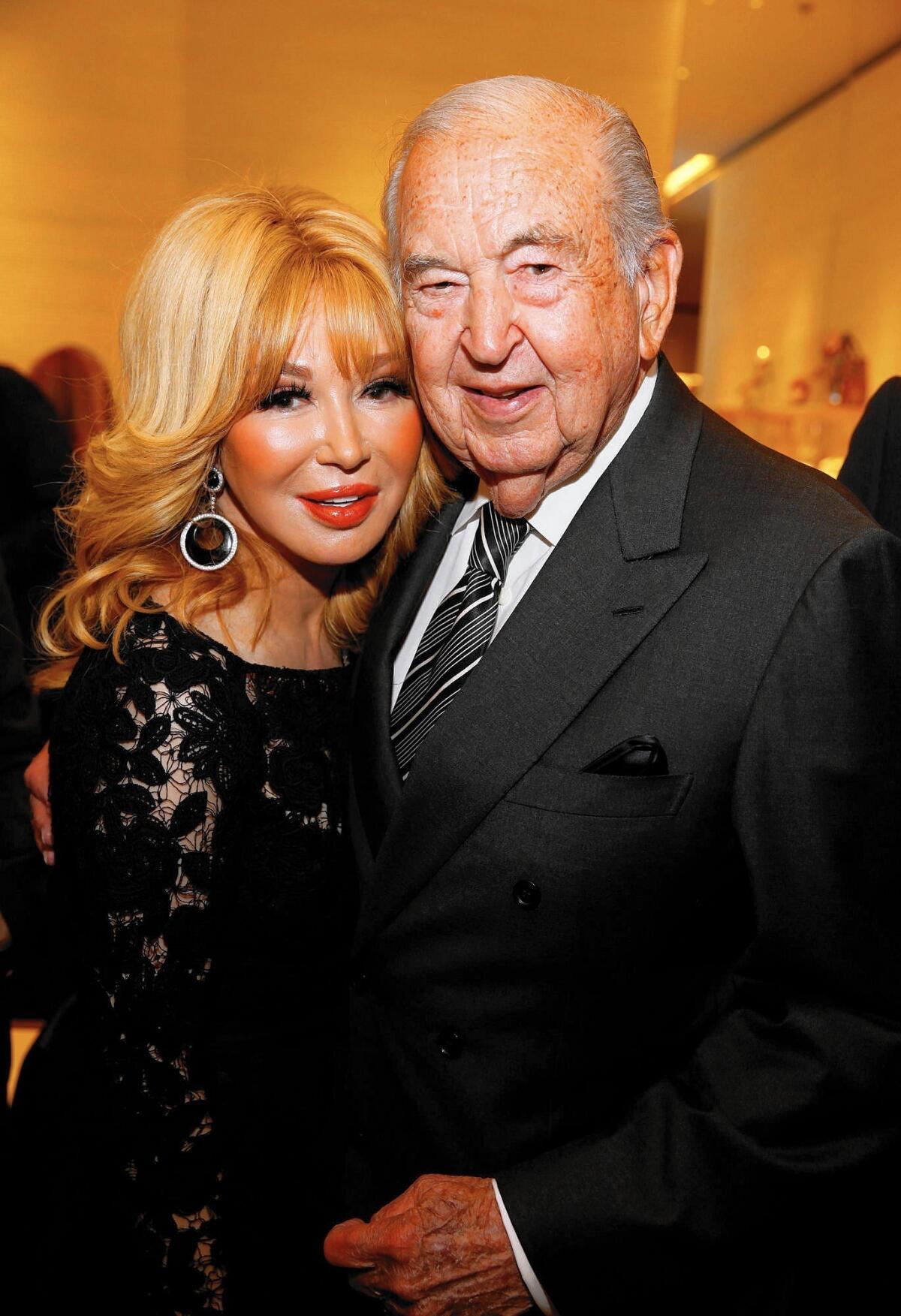William Lyon, Orange County real estate magnate who foresaw region’s growth, dies at 97

Orange County real estate magnate William Lyon, who built more than 100,000 homes nationwide and helped shape suburban America over the past half-century, has died. He was 97.
Lyon, a former Air Force general, was among the pioneers of Southern California’s post-World War II economic boom, a prescient businessman who foresaw the region’s stratospheric growth and the unquenchable need for housing.
“It is with deep sadness we announce our founder, General William Lyon, passed away peacefully at his home earlier this afternoon,” the Lyon Air Museum announced on Twitter Friday. His son told the Orange County Register that the death was not related to COVID-19.
Lyon began his construction career in 1954 with a 66-home project in Anaheim. Within a decade he was among the nation’s largest homebuilders and would ride the wave of suburban sprawl for decades to come. His William Lyon Co. was headquartered in Newport Beach.
“Lyon has grown large by selling a mass-produced, relatively inexpensive product,” Forbes magazine wrote of him in 1990. “A Lyon community is a latter-day Levittown marketed with a Sam Walton flair. ... Like Walton, he undercuts competitors’ prices and dresses his customer service people in distinctive blue uniforms.”
Lyon was a decorated Air Force pilot who served in World War II and the Korean War, attaining the rank of major general. In the mid-1970s, he took a four-year sabbatical from business when he was appointed chief of the U.S. Air Force Reserves by President Ford.
“The General,” as friends knew him, was a big-game hunter who owned one of the world’s most valuable rare car collections — some 100 vehicles that he housed in a 15,000-square-foot “garage” on his sprawling Coto de Caza estate. Among them were vintage Duesenbergs, a Mercedes used as a staff car by Adolf Hitler and a 1931 Bugatti Royale Coupe de Ville, one of only six made.
Unlike some collectors, Lyon regularly took his irreplaceable automobiles out for a spin.
“These cars originally were made to be driven, so I put them to their intended purpose,” he told a Los Angeles Times reporter in 1987. “If I couldn’t drive a car, I wouldn’t want it.”
Lyon was a major philanthropist, donating millions to organizations including the Orangewood Children’s Foundation for abused and neglected children and the Orange County Performing Arts Center. He was also a leading Republican fundraiser. He once hosted a $100,000-per-couple lunch at his home to raise money to build Ronald Reagan’s presidential library.
Lyon’s business career mirrored California’s roller-coaster real estate market. He became one of the nation’s wealthiest men during the boom years of the 1960s and ’70s but was nearly ruined by the 1990s housing crash. In 1999, he was able to rebound when the market did — unlike many of his competitors.
“In business, as in religion, you have to believe in something,” he once told a meeting of developers. “If you are a California builder, you must believe that people will continue to come to California, or you will not get to heaven.”
Lyon was born in Los Angeles on March 9, 1923. The son of a beverage wholesaler, Lyon fell in love with aviation at age 16 after paying $1 to fly in an airplane. Seven years later, he dropped out of USC to be a commercial pilot. While in the Air Force, he flew 75 combat missions in Korea, dropping U.S. agents behind enemy lines.
Flying remained in Lyon’s blood throughout his life. He owned several aviation companies through the years and remained an active pilot, piloting his own corporate jet as well as a stable of World War II-era planes he collected.
In 2008, at age 85, Lyon flew a vintage B-17 Flying Fortress across the country to participate in a memorial ceremony in Washington, D.C. The trip in the World War II-era bomber took two days.
“It has four engines, so if one shuts down, it’s not a big problem,” Lyon told the Register. “I’m taking my chief mechanic and a lot of spare parts.”
Mike Anton is a former Los Angeles Times staff writer. Los Angeles Times staff writer Sonali Kohli contributed to this report.
All the latest on Orange County from Orange County.
Get our free TimesOC newsletter.
You may occasionally receive promotional content from the Daily Pilot.



